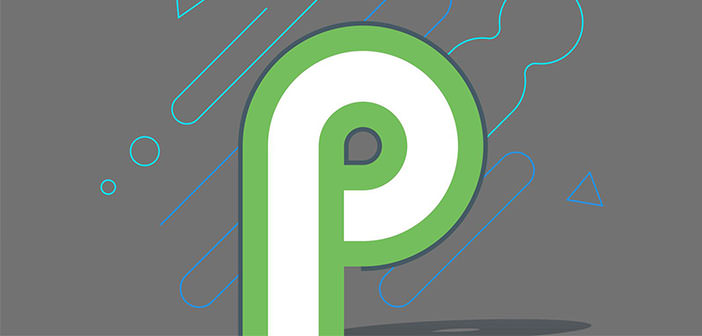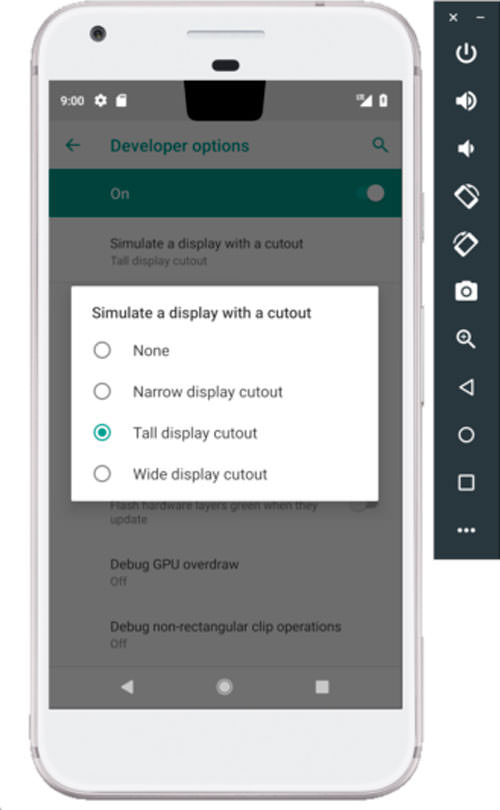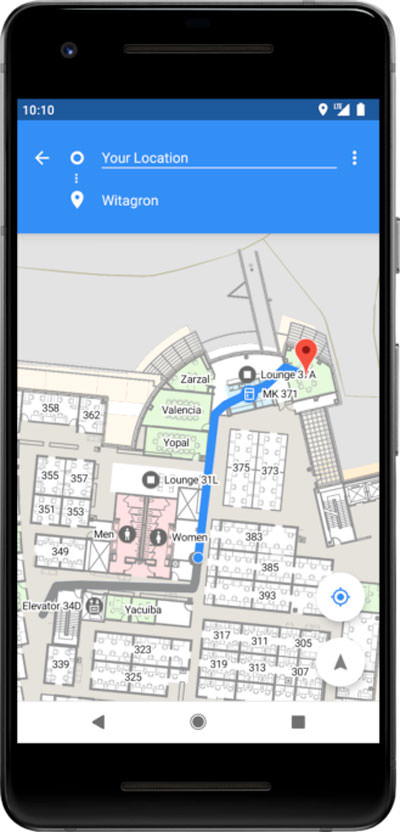Android P: Here are all the news of the new Google operating system
Google in advance of a week releases the new version of its Android operating system. Many news of this new version from the support to the notch, through improvements to the dual cam but also notifications, HDR and much more. Here are all the news collected in this article.
Android P is official. Google released it in advance of the schedule that was expected, and he did it as always by surprise. The new version (assuming the number 9.0) is now available in Factory Image version but also OTA (to install it but you will have to use the manual method) for all those who want to try the news that the Mountain View company has introduced and that at first glance seem to be really many.
The Developer Preview arrives already with a good baggage of interesting and curious features such as support to the ” notch ” that is the bezel that the producers have started to place on their smartphones but also allows to obtain improvements in the future for the dual cam smartphone new generation, a revised system of even more detailed notifications, expanded support for HDR, navigation and positioning inside buildings but also new local backup system and much more. Let’s see together all the most important news of the new Android P.
Native support to the Cutout Display ie to the ” notch. “
The new Android P adapts itself forcibly to the stylistic innovations that most of the manufacturers are introducing on their devices, and this means supporting the much talked ” notch ” that is the bezel that in the new displays a the whole screen allows positioning of the front camera and the various sensors in the upper front part of the device.
A style started by Apple with the new iPhone X and that the Android producers (except Samsung and a few others) wanted to follow by introducing it also in their top of the range. Google with Android P will allow natively support the so-called ” Display Cutout, ” proposing even specific libraries for developers who can more easily adapt and optimize applications in case the smartphone was in possession of the famous ” notch ” front.
![Android P]() Revised notifications in design and operation
Revised notifications in design and operation
Android P does not revolutionize the functional system of notifications that appeals to Android users a lot but modifies it by improving it in the new version of its operating system, extending its functionality and modifying some aesthetic aspects, making it even more modern at first impact.
In this case, the improvements concern the possibility, with messaging app, for example: to contain images and stickers but also to show entire conversations with the various names of contacts allowing also to respond quickly with the now classic ” smart replay “. Not only because the message not completed on the smart replay that by accident was involuntarily or voluntarily closed will still be saved as a draft to be resumed at a later time.
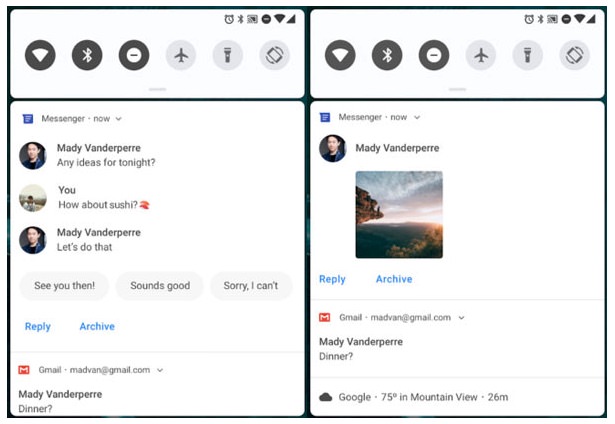 As mentioned also the look of the notification menu is reviewed with Android P and in this case also the Quick Toogle or the buttons for the system shortcuts, but also the system pop-up windows and setting menu have a new graphic with rounded corners and bright colors.
As mentioned also the look of the notification menu is reviewed with Android P and in this case also the Quick Toogle or the buttons for the system shortcuts, but also the system pop-up windows and setting menu have a new graphic with rounded corners and bright colors.
Moreover, they will be able to adapt to the state and to the modifications of the system such as the coloring of the quick toogle based on the background that one possesses. With Android P you will not have to scroll from left to right and vice versa to take advantage of new toogle but just scroll from top to bottom just like you do for the application drawer.
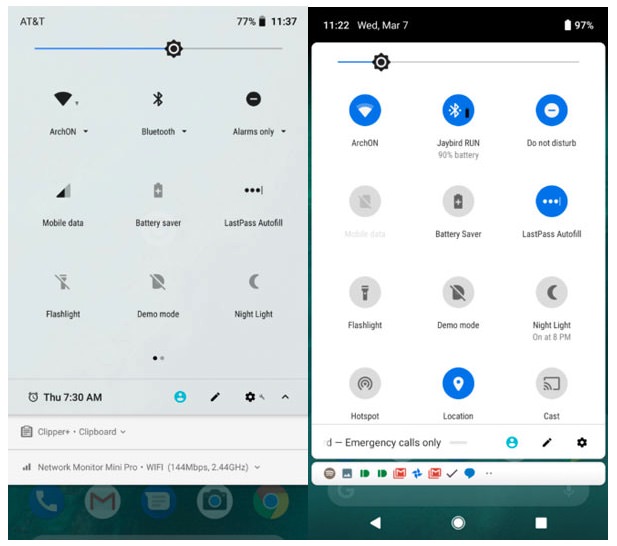 In addition to this clearly present also news concerning the transitions of the various menus that Google has decided to change in Android P and that seem to be very effective at least in these first impressions.
In addition to this clearly present also news concerning the transitions of the various menus that Google has decided to change in Android P and that seem to be very effective at least in these first impressions.
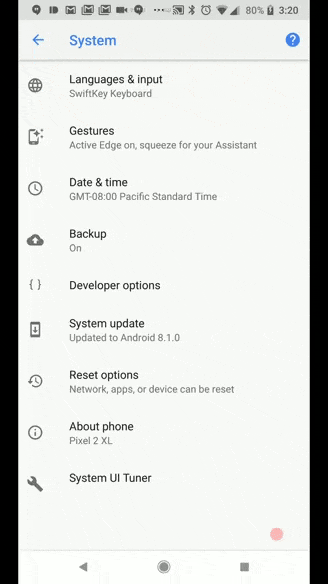 Multi-Camera Support Android P will allow developers to have access to the stream from two or more cameras simultaneously and allow them to be used in a complete and detailed way. This means that developers will be able to expand the way they use double cams that are now a must have in a next-generation smartphone. In this way, it will be possible to obtain improvements regarding, for example, the ” bokeh ” effects or also with regard to the zooms which will have less loss of detail and a more stereoscopic vision.
Multi-Camera Support Android P will allow developers to have access to the stream from two or more cameras simultaneously and allow them to be used in a complete and detailed way. This means that developers will be able to expand the way they use double cams that are now a must have in a next-generation smartphone. In this way, it will be possible to obtain improvements regarding, for example, the ” bokeh ” effects or also with regard to the zooms which will have less loss of detail and a more stereoscopic vision.
Multi-Camera Support
Android P will allow developers to have access to the stream from two or more cameras simultaneously and thus allow them to be used in a complete and detailed way. This means that developers will be able to expand the way they use double cams that are now a must have in a next-generation smartphone. In this way, it will be possible to obtain improvements regarding, for example, the ” bokeh ” effects or also with regard to the zooms which will have less loss of detail and a more stereoscopic vision.
Indoor position detection
Another new feature of Android P is support for the IEEE 802.11mc Wi-Fi protocol that will allow users to use positioning applications such as Google Maps even inside closed environments where GPS is currently struggling to work. In this case with the new Google operating system, you will get the precise position that will be calculated directly from the device and only from it thus allowing navigation without problems even within the structures such as shopping centers or museums.
The novelty clearly in this case allows the devices to measure the distance from the access points to define their position (by triangulation) inside the indoor environments, with a tolerance of one or two meters.
![Android P]() High Dynamic Range (HDR) VP9 Profile 2
High Dynamic Range (HDR) VP9 Profile 2
News also on the multimedia side with the availability of native support to the HDR profile VP9 Profile 2. This will allow to natively reproduce HDR content on YouTube but also on all other platforms. In addition to the videos, there is also a novelty on the images side as Android P will also support the HEIF format which allows better compression of the images clearly without loss of quality.
Open Mobile API for NFC payments
Google has also thought about improving the system for payments with NFC and in this case Android P allows support for the new Open Mobile API for wireless payments. In this case, developers can easily access an even more secure system and thus allow users to use their smartphone payments in total security.
Energy Management and Security
Android P clearly could not exempt itself from increasing security for users who will use it. In this case, there will be news with the applications in the background that on the new operating system of Google will no longer have access to the microphones, the camera but also to the various sensors. This will minimize the chances that an application can secretly spy on a user.
On energy management, Android P, improves the situation thanks to a new update of the Doze system that we know well on the latest versions of Android. In this case, the new system will allow better management of standby applications with a limitation of the functions in the background that will only improve the autonomy of the device. Or at least hopefully.
Neural Networks API
Space also to the Artificial Intelligence that in Android P sees the arrival of the Neural Networks API 1.1 or novelty regarding the Machine Learning of Google. We do not know anything about the news, but we know that for example: the new Pixel 2 and Pixel 2 XL will get a new Qualcomm Hexagon HVX driver that will enable hardware acceleration for the calculation of quantized models.
Target API 26
From next November 2018, Google Play will request updates to applications to target Android Oreo or API 26 or later versions. A system to try to ” wake up ” the developers who will have to adapt to the latest Android releases. At the moment, with this first Developer Preview, Google, has decided to still maintain support for API 17 and for Android 4.2, but we know that it will gradually go up to API 26 with the next Developer Preview.
Devices supported by Android P
At the moment, it is not clear how much Android P will be pushed by Google in closing the support of ” dated ” mobile devices. At the time the release of the first Developer Preview has already seen the elimination of Nexus and the only smartphone ” Google ” that will install the new version of Android are the first and second generation Pixels.
The Android P roll out roadmap has already been outlined by Google with the release of the first Developer Preview. In this case, to get the final version and public as always, it will take a few months, and the Mountain View company has already prepared the stakes for the release of 4 developer preview of aging.
The second DP will come during the next month of May while the third DP should be released for the month of June with a DP4 even a few weeks later and before July. Finally, the Final Release or the public version should be released by Google during the third quarter of 2018.

